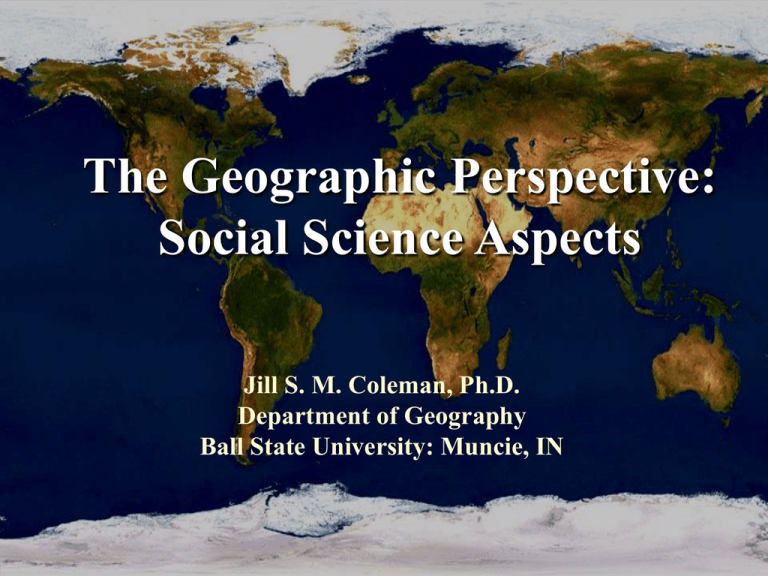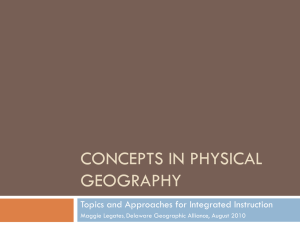Geography
advertisement

The Geographic Perspective: Social Science Aspects Jill S. M. Coleman, Ph.D. Department of Geography Ball State University: Muncie, IN Geography: Defining the Discipline What is geography? What topics do geographers study? What makes geography different from other disciplines? Geography: Defining the Discipline Geographia (Greek origins) Geo (earth) + graphein (to describe or write) To write or describe the surface of the earth The study of the spatial arrangement and association among elements on and/or in contact with the earth’s surface Explaining the “big picture” Geography: Defining the Discipline Three defining questions… What is located where? Why are things located where they are? What is the significance? Modern Geography: Traditions Spatial distributions of physical and cultural features Relationship between people and the environment Existence and evolution of regions Physical characteristics of the earth Geography: Defining the Discipline Linkage with the physical sciences and social sciences Interdisciplinary Variation across space Degree of human impact assessment Human Geography Study of the relationship of human beings and their activities (past or present) to the surrounding environment and the consequences of these interactions Focuses more on… The cultural characteristics of a place The processes that influence or shape that place The interconnectedness of those places Tools of the Trade Visual Representation Cartography Remote Sensing Geographic Information Systems (GIS) Qualitative Techniques Surveys Personal Interviews Spatial Quantitative Methods Patterns and Distributions Example: Cocaine Export & Distribution Economic Geography Patterns and Distributions Example: 2003 West Nile Virus Incidence Medical Geography Biogeography Climatology Patterns and Distributions Example: 2007 West Nile Virus Incidence Medical Geography Biogeography Climatology The Geographic Perspective Understanding the ways in which humankind perceives and interacts with the Earth’s surface, its resources, and its people Geography lies at the intersection of both social and physical sciences Explain the processes that give rise to spatial distributions---it’s not all about maps! Geographic landscapes are social creations





